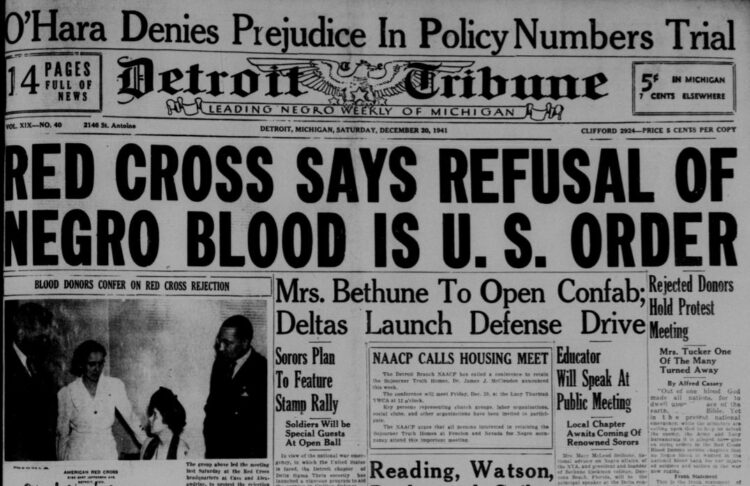BY MELBA NEWSOME
Jan 18, 2023
A 1940s Red Cross rule, which racially segregated blood, propped up notions of racial difference and Black inferiority.
In the summer of 1941, months before the U.S. officially entered the global conflict that would occupy it for the next four years, the country’s military was already out for blood. That February, the Army and Navy had joined the American Red Cross to establish the National Blood Donor Service — the first nationwide network of blood banks — with an eye toward supplying life-saving donations to wounded service members.
But when Wanda Douglas, an African American worker at the Social Security Board, went with nine White coworkers to give blood at a Baltimore donation center that July, she was turned away. Unknown to her, and to the general public at the time, the Red Cross had decided not to accept blood from Black donors for use in its military program. Officials feared that White servicemen, even with their lives in the balance, would recoil at the prospect of Black blood coursing through their veins. Douglas could donate blood, she was told, but only if she went to a separate location. And the Red Cross policy meant that her donation would never find its way to the battlefield.
Douglas and several of her coworkers left the center in protest. Her story was later picked up by a local Black newspaper, the Baltimore Afro-American. In a nod to the segregation laws that were then rampant in the Southern U.S., the paper dubbed the discriminatory treatment “Red Cross Jim Crow.”
According to historian Thomas Guglielmo, who chronicled this history of the National Blood Donor Service in a 2010 article in the Journal of American History, Douglas may have been the first Black person turned away from a Red Cross blood donation center in such a public manner, but she was by no means the last. Over the months and years that followed, Red Cross donation centers across the country would either reject blood from Black donors outright, or accept donations but store and process them separately, to ensure they never reached the veins of White servicemen. Officials gave no scientific rationale for the policy. Rather, historians say the policy served to placate a sense, especially among White Southerners, that Black blood was inherently different from and inferior to their own.
For Black Americans who were already locked in a battle for dignity and civil rights, the policy was likely a painful reminder that they were second-class citizens — no matter which side of the Mason-Dixon line they were on.
This article appears in its entirety at website Undark. It can be read here.
